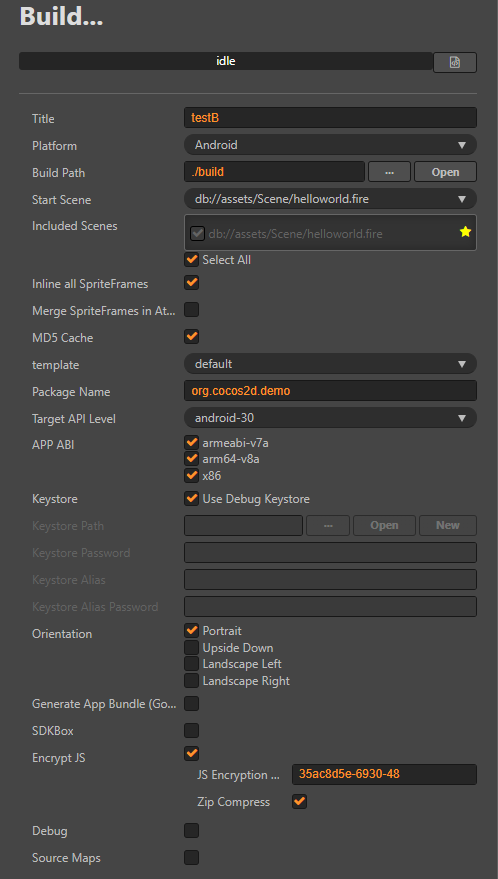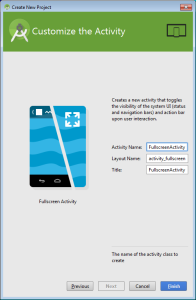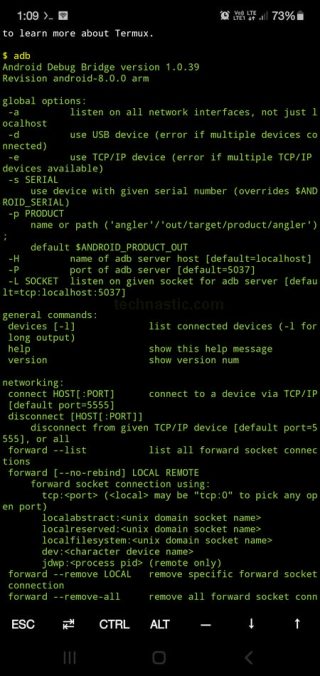

- ANDROID NDK TUTORIAL HOW TO
- ANDROID NDK TUTORIAL UPDATE
- ANDROID NDK TUTORIAL UPGRADE
- ANDROID NDK TUTORIAL FULL
- ANDROID NDK TUTORIAL FOR ANDROID
If you want to use the binary from within your Android application. Quickstart for Android NDK On this page Set up your development environment Prepare your device or emulator Open the sample project Run the sample Use. This article will provide instructions for building the latest OpenSSL library version 1.1.1c for Android devices. Therefore, you need to use either the PIE or the non-PIE, depending on the device version.
ANDROID NDK TUTORIAL UPGRADE
Versions that out of support won’t receive security fixes anymore.Īll users of 1.0.2 and 1.1.0 are encouraged to upgrade to 1.1.1 as soon as possible.
ANDROID NDK TUTORIAL UPDATE
In other words, if you started using OpenSSL in your project several years ago and didn’t actively update the library, you probably run into the situation that the library you used will go out of support sometimes in 2019.
 The 0.9.8, 1.0.0 and 1.0.1 versions are now out of support and should not be used. Version 1.1.0 series (released August 2016) will continue to be supported until 11th September 2019 Here are some helpful links if you need more resources or tutorials: Google’s Android NDK samples were invaluable for me to piece together this tutorial: https. Version 1.0.2 series (released January 2015) will continue to be supported until 31st December 2019. Version 1.1.1 series are the latest LTS, supported until 11th September 2023. Here is the brief from the OpenSSL website: To avoid including headers multiple times by mistake, wrapping the header content in #ifndef - #endif can be used, this avoids error during compilation.OpenSSL version 1.1.1 series are released in September 2018, along with that, the Long Term Support (LTS) version is also updated. To add header files we can either use #include to include standard library header files or #include "filename" to include programmer-defined header files. Every interface function is at a predefined offset inside the e figure below for the illustration. This pointer points to an array of pointers, each of which points to an interface function. An interface pointer is a pointer to a pointer. JNI functions are available through an interface pointer. In my case, it’s an object of Math class. jobject jObj is the class instance that contains this function in Kotlin code. All your native functions will receive a JNIEnv as the first argument. The JNIEnv* is a pointer to the pointer to function tables. Pro Android C++ with the NDK Pro Android C++ with the NDK Android NDK Beginners Guide Pro Android C++ with the NDK Android NDK Game Development Cookbook. The native function should have at least two arguments: JNIEnv* pEnvand jobject jObj. Function name should start with Java and name of the class that contains the appropriate method in Java or Kotlin code. In this case, JNIEXPORT will be replaced by _attribute_ ((visibility ( “default”))). It involves more than one language and runtime so some familiarity with C/C++ is recommended. JNI is the medium of interaction between the Java runtime and native code. Use libraries like FFMPEG, OpenCV, etc. Reuse code between your iOS and Android apps.
The 0.9.8, 1.0.0 and 1.0.1 versions are now out of support and should not be used. Version 1.1.0 series (released August 2016) will continue to be supported until 11th September 2019 Here are some helpful links if you need more resources or tutorials: Google’s Android NDK samples were invaluable for me to piece together this tutorial: https. Version 1.0.2 series (released January 2015) will continue to be supported until 31st December 2019. Version 1.1.1 series are the latest LTS, supported until 11th September 2023. Here is the brief from the OpenSSL website: To avoid including headers multiple times by mistake, wrapping the header content in #ifndef - #endif can be used, this avoids error during compilation.OpenSSL version 1.1.1 series are released in September 2018, along with that, the Long Term Support (LTS) version is also updated. To add header files we can either use #include to include standard library header files or #include "filename" to include programmer-defined header files. Every interface function is at a predefined offset inside the e figure below for the illustration. This pointer points to an array of pointers, each of which points to an interface function. An interface pointer is a pointer to a pointer. JNI functions are available through an interface pointer. In my case, it’s an object of Math class. jobject jObj is the class instance that contains this function in Kotlin code. All your native functions will receive a JNIEnv as the first argument. The JNIEnv* is a pointer to the pointer to function tables. Pro Android C++ with the NDK Pro Android C++ with the NDK Android NDK Beginners Guide Pro Android C++ with the NDK Android NDK Game Development Cookbook. The native function should have at least two arguments: JNIEnv* pEnvand jobject jObj. Function name should start with Java and name of the class that contains the appropriate method in Java or Kotlin code. In this case, JNIEXPORT will be replaced by _attribute_ ((visibility ( “default”))). It involves more than one language and runtime so some familiarity with C/C++ is recommended. JNI is the medium of interaction between the Java runtime and native code. Use libraries like FFMPEG, OpenCV, etc. Reuse code between your iOS and Android apps.  Squeeze extra performance out of a device to achieve low latency or run computationally intensive applications, such as games or physics simulations. However, the NDK can be useful for the following cases: The NDK may not be appropriate for most novice Android programmers who need to use only Java code and framework APIs to develop their apps.
Squeeze extra performance out of a device to achieve low latency or run computationally intensive applications, such as games or physics simulations. However, the NDK can be useful for the following cases: The NDK may not be appropriate for most novice Android programmers who need to use only Java code and framework APIs to develop their apps. 
It provides platform libraries to manage native activities and access hardware components such as sensors and touch input. The Native Development Kit (NDK) is a set of tools that allow you to use C and C++ code in your Android app. It is neither affiliated with Stack Overflow nor official android-ndk. All the content is extracted from Stack Overflow Documentation, which is written by many hardworking individuals at Stack Overflow.
ANDROID NDK TUTORIAL HOW TO
Through this article, I’ll be sharing my experiences with the NDK and how to use it with Kotlin. In this video we shall take a look at our first NDK program.Most people have started their android journey by learning Java or Kotlin. from: android-ndk It is an unofficial and free android-ndk ebook created for educational purposes. I was excited to work on it but at the same time worried because of the lack of documentation. NDK Introduction6 lectures 23min Getting Started with NDK3 lectures 40min FFMPEG with Android6 lectures 37min Android Google Oboe Tutorial2 lectures. On my journey to becoming a better developer, I got a chance play with the Android NDK on one of my projects.
ANDROID NDK TUTORIAL FULL
An Android app developer's daily life is full of challenges, from updates in the ecosystem, migration to Kotlin to using Dagger2, RxJava and so on.








 0 kommentar(er)
0 kommentar(er)
